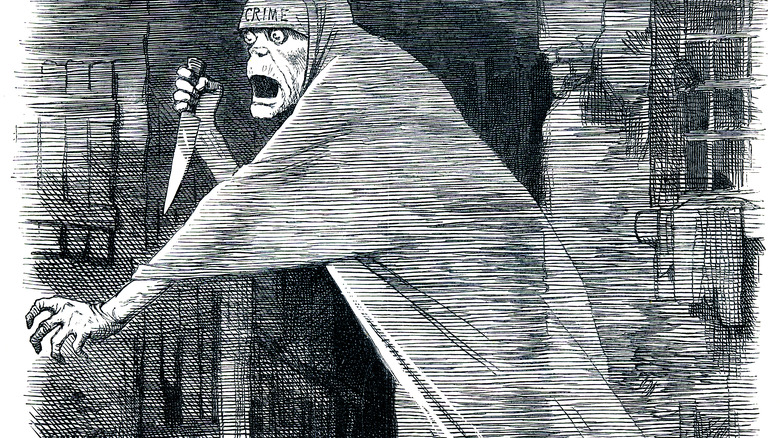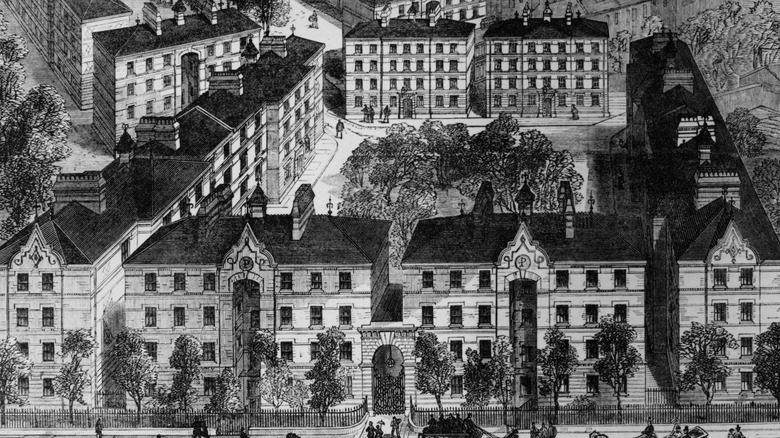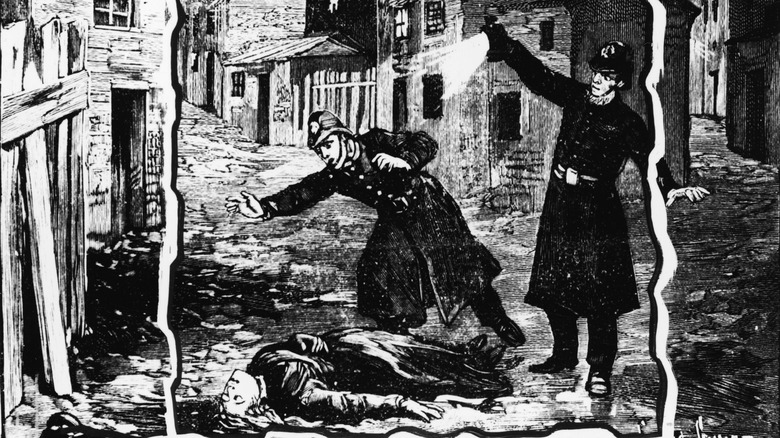What We Know About Serial Killer Jack The Ripper's First Victim
The last time Mary Ann Nichols had been seen alive she appeared to be inebriated. A friend saw her teetering down Whitechapel Road around 2:30 a.m., according to The Morning Post. It was Friday, August 31, 1888, and Nichols was about to step into history as serial killer Jack the Ripper's first known victim. An hour later. Charles Cross, a delivery driver heading to work, saw what he believed to be a tarpaulin tossed in a doorway on Buck's Row, but realized it was a woman, per History. He and another delivery driver went to investigate. It was so dark they didn't even notice that someone had slit her throat, per Cross's testimony at the inquest (per The Morning Post). Believing she was either "dead or else drunk," they left to go find a police officer and report what they'd seen.
Nichols was the first but not the last of Jack the Ripper's victims. There were at least four others that followed and all of them were similarly destitute. Nichols' dingy clothes and meager possessions — a "comb," "white pocket handkerchief," and a "broken piece of a mirror" — helped tell the sad story of her circumstances (via Casebook: Jack the Ripper). But once, she had a stable home life with a husband and five children.
Married, with children
Mary Ann Nichols, known as Polly, was born on August 26, 1845, in London to a locksmith and his laundress wife. From early in her life she was put to work helping her mother in the backbreaking labor of hand washing and pressing the clothes of others, according to "The Hidden Lives of Jack the Ripper's Victims." Polly had brown hair, high cheekbones, and a light-hearted demeanor.
At 19 she married a printer's machinist named William Nichols and they moved in first with his parents and then with her father who had set up a blacksmith shop. In 1876, Polly, William, and their growing family moved into the Peabody Buildings, new tenements for the working poor with such conveniences as indoor toilets and gas-heated baths, per "The Five: The Untold Lives of the Women Killed by Jack the Ripper." But cracks in the marriage and the couple's lives soon appeared. Polly began to overindulge in alcohol, and there were allegations that her husband was having an affair. On more than one occasion she left her husband and children — they had five by the time of her murder — and moved into a workhouse.
Desperate times in Victorian London
Life in a Victorian workhouse was not easy. The denizens were required to live in a group setting divided by gender and work long hours doing tedious work starting at 5 a.m., per "The Hidden Lives of Jack the Ripper's Victims." Polly returned to her husband but eventually, the couple separated for good in 1880 and she scraped by as a cleaning woman while living in a series of lodging houses.
Many sources claim Polly became a sex worker, mainly based on William Nichols' accusing her of this as a means to stop financially supporting her, per Casebook: Jack the Ripper. Hallie Rubenhold, author of "The Five," argues that there is little evidence Polly or three other of Jack the Ripper's victims were sex workers (via The Guardian). On the day of her death, Polly didn't have enough money for a room, per The Morning Post. She may have been sleeping in a doorway at the time Jack the Ripper brutally murdered her.
If you or anyone you know needs help with addiction issues, help is available. Visit the Substance Abuse and Mental Health Services Administration website or contact SAMHSA's National Helpline at 1-800-662-HELP (4357).


